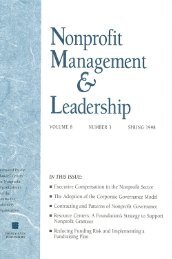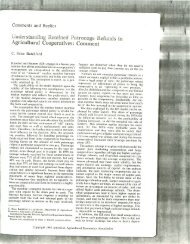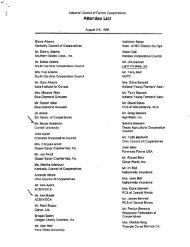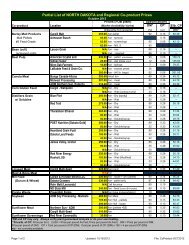Sunflower Production Field Guide - Your "Home Page"
Sunflower Production Field Guide - Your "Home Page"
Sunflower Production Field Guide - Your "Home Page"
You also want an ePaper? Increase the reach of your titles
YUMPU automatically turns print PDFs into web optimized ePapers that Google loves.
26<br />
Pest Management<br />
(Janet Knodel and Larry Charlet)<br />
Integrated Pest Management<br />
Sunfl ower can be a high-risk crop because of potential<br />
losses from diseases, insects, birds and weeds. These<br />
potential risks require that growers follow integrated<br />
pest management (IPM) practices. IPM is a sustainable<br />
approach to managing pests by combining<br />
biological, cultural, physical and chemical tools in a<br />
way that minimizes economic, health and environmental<br />
risks to maintain pest populations below levels<br />
that cause unacceptable losses to crop quality or yield.<br />
The concept of pest management is based on the fact<br />
that many factors interact to infl uence the abundance<br />
of a pest. Control methods vary in effectiveness, but<br />
integration of these various population-regulating<br />
factors can minimize the number of pests in sunfl ower<br />
and reduce the cost of managing pest populations<br />
without unnecessary crop losses. IPM also recommends<br />
the judicious use of chemical pesticides when<br />
needed and suggests ways to maximize effectiveness<br />
and minimize impact on nontarget organisms and the<br />
environment.<br />
Economic Injury Level<br />
and Economic Threshold Levels<br />
One major component of a pest management program<br />
is determining when tactics should be implemented<br />
to prevent economic loss. Economic loss results when<br />
pest numbers increase to a point where they cause<br />
crop losses that are greater than or equal to the cost of<br />
controlling the pest. An economic injury level (EIL) is<br />
defi ned as the level of pests that will cause economic<br />
damage. An EIL recognizes that treatment is justifi ed<br />
for some pest population levels while others are not of<br />
economic importance.<br />
An economic threshold level (ETL) is the level or<br />
number of pests at which tactics must be applied to<br />
prevent an increasing pest population from causing<br />
economic losses. Usually the ETL is lower than the<br />
EIL. The ETL has been defi ned most extensively for<br />
insect pests; fewer ETLs have been established for<br />
other types of pests. The ETL varies signifi cantly<br />
among different pests and also can vary during different<br />
developmental stages of the crop. Crop price, yield<br />
potential, crop density, cost of control and environmental<br />
conditions infl uence the ETL and EIL. Generally,<br />
the ETL increases as cost of control increases and<br />
decreases as the crop value increases.<br />
Monitoring Pest Population Levels<br />
In general, fi elds should be evaluated regularly to determine<br />
pest population levels. A weekly fi eld check is<br />
usually suffi cient, but fi eld checks should be increased<br />
to two or three times a week if the number of pests is<br />
increasing rapidly or if the number is approaching an<br />
economic threshold level. Pests should be identifi ed<br />
accurately because economic threshold levels and con-







